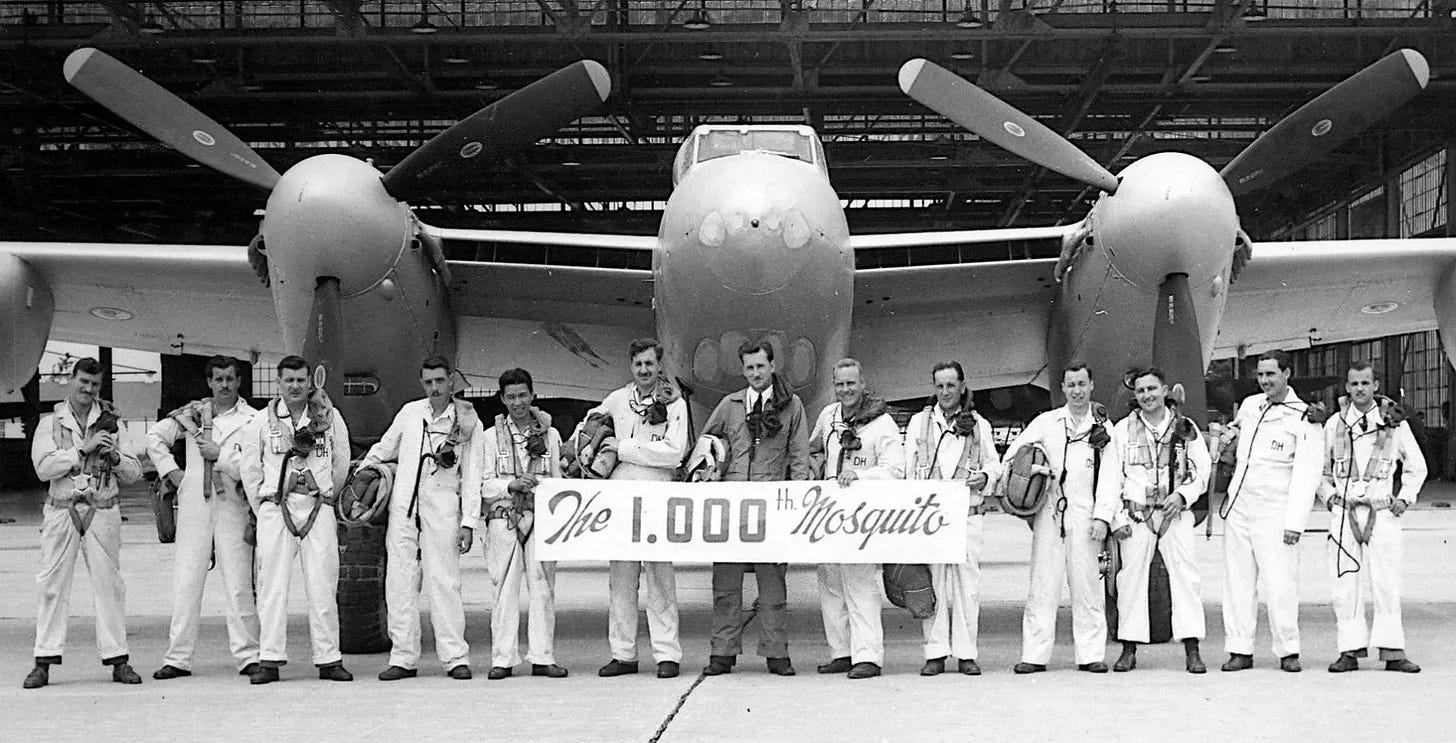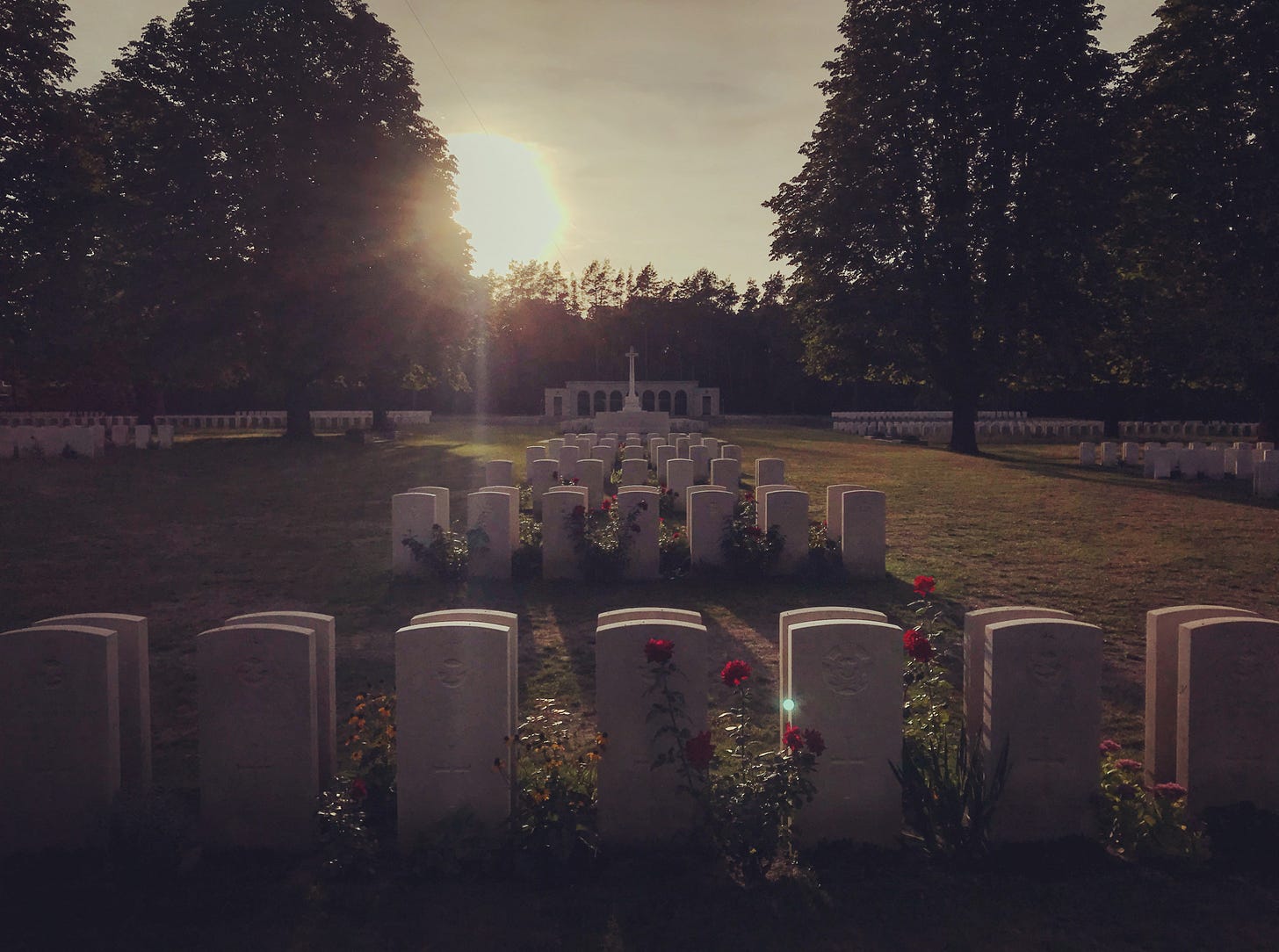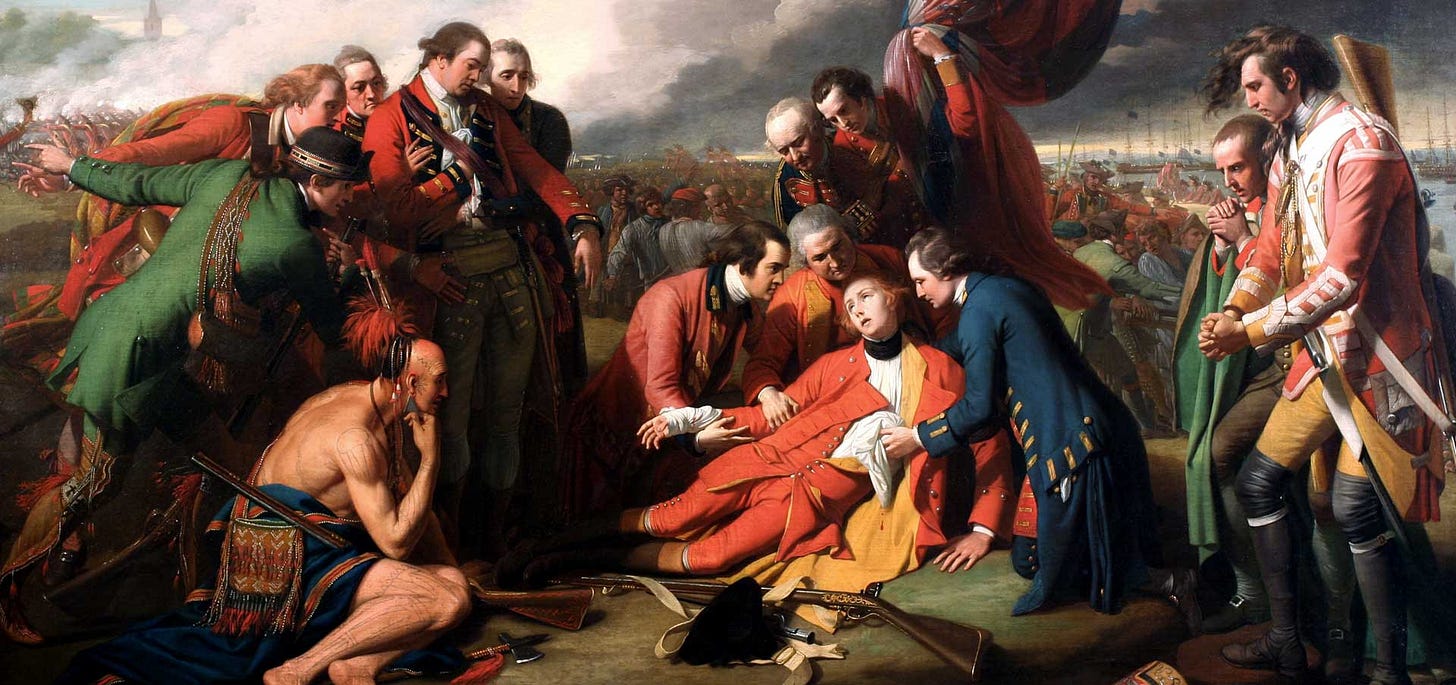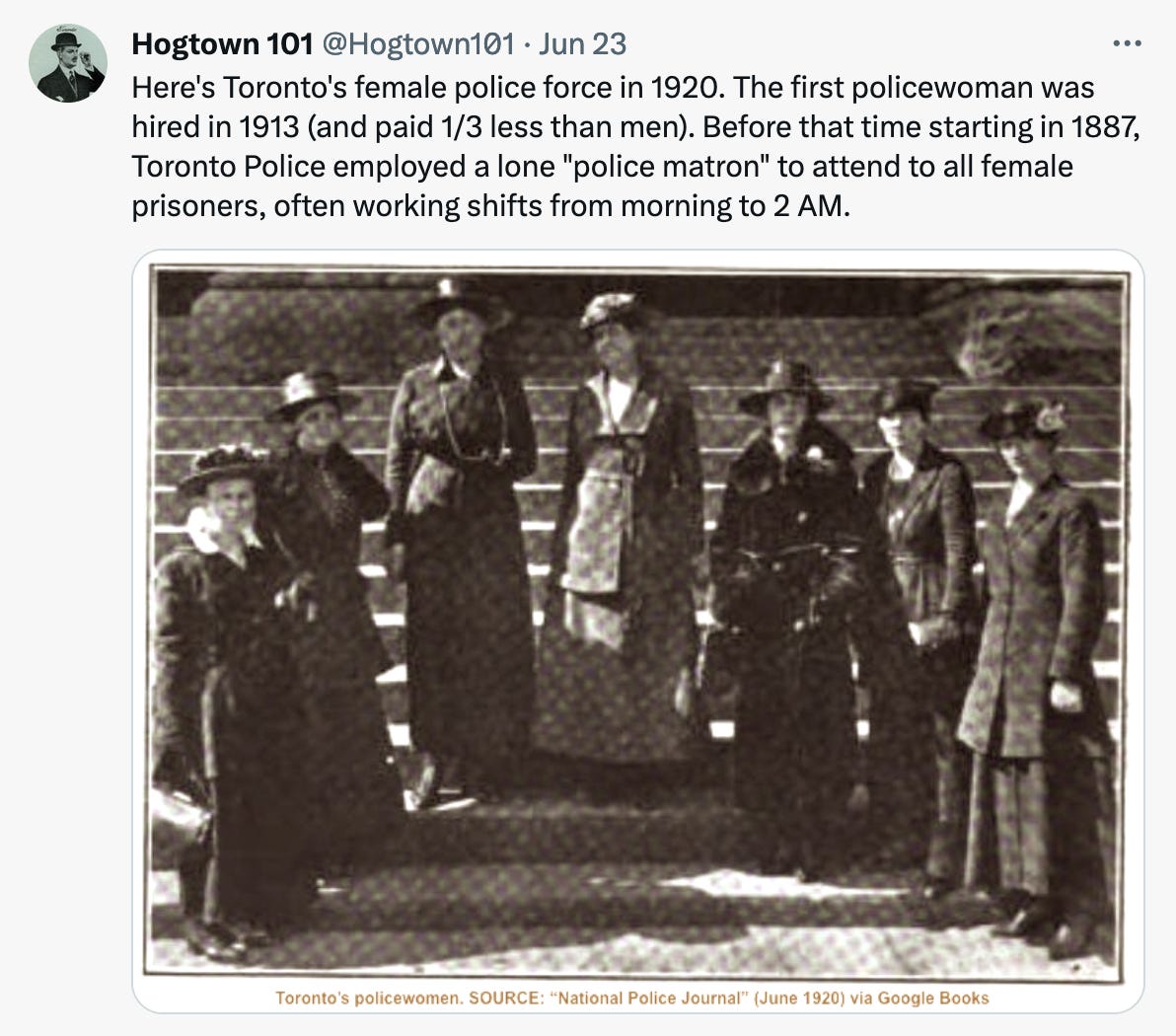The Doomed Dupont Landmark That Helped Win The War
Plus my new Canadian history course, a history of drag, and more...
It has stood on the corner of Dupont & Ossington for more than a century, a titan of concrete and glass. Today, it stands empty, covered in graffiti, awaiting its fate; the artists who used it as affordable studio and living space in recent years have already been evicted. Soon, it will be demolished, razed to the ground so a new mixed-use development can rise in its place. But before it does, I wanted to share some of the history of 888 Dupont — a seemingly mundane building with an unexpectedly fascinating past.
It began as a relatively ordinary factory. It was originally used to spin thread into yarn when it first opened in 1921; then, a paper and printing company moved in. But just eighteen years after the building was built, the Second World War broke out — and the factory suddenly found itself playing an important role in the fight against the Nazis.
888 Dupont was now being used to build one of the strangest airplanes in the world.
The Mosquito was unlike other bombers. While most airplanes of the age were made of metal, this one was mostly plywood covered in cotton fabric. The idea behind the new flying machine was that instead of being heavily armed or fortified against German bullets, the Mosquito would be as light as possible — and thus, so fast that the Luftwaffe couldn’t catch up with it. By the time the Germans opened fire, the plane would be gone.
When the British De Havilland Aircraft company first proposed the idea, the British government thought it was ludicrous. But once a prototype was built, it became clear just how useful the new plane would be. With as few heavy metal parts as possible, the Mosquito was able to reach speeds of more than 600 km/h, making it one of the fastest planes to serve on either side of the war — twice the speed of the bigger bombers. It was agile, versatile enough to be used as a fighter, only needed two crew members to fly, consumed less fuel than heavier planes, didn’t drain precious supplies of metal, and allowed for the experience of woodworkers and carpenters to be leveraged for the war effort in a way that hadn’t been possible before.
The Mosquito became known as “The Timber Terror” and “The Wooden Wonder.” It quickly took its place among the ranks of the most effective weapons in the Allied air forces. Hermann Goering, head of the Luftwaffe, was said to have been driven into fits of jealously over the aircraft. “It makes me furious when I see the Mosquito,” he’s reported to have said, “I turn green and yellow with envy.”
Nearly eight thousand Mosquitos would be built — so many, and in such a hurry, that they couldn’t all be made at De Havilland’s facilities in England. Which is how 888 Dupont got involved.
More than a thousand of the Mosquitos were made in Toronto. They were assembled at the big De Havilland plant at Downsview, with components provided by various contractors around the city. The fuselages — the main body of the aircraft — were built at the factory on the corner of Dupont & Ossington before making their way to Downsview… and then into the dangerous skies above Europe.
By then, Goering had gotten a personal taste of the Mosquito’s might. It came on the tenth anniversary of Hitler’s rise to power. Berlin was filled with festivities that day, marking the occasion with rallies and speeches. But at the exact moment Goering was meant to begin a celebratory radio address, a trio of British Mosquitos soared into the air above Berlin, bombing the headquarters of the German State broadcasting company as sirens began to wail. The transmission was cut off and replaced by more than an hour of classical music before Goering was finally able to get back onto the air. A few hours later, as Joseph Goebbels began his own speech, another trio of Mosquitos arrived. As the Minister of Propaganda spoke, radio listeners could hear the sound of exploding bombs in the background, roaring engines and anti-aircraft fire. One of the Mosquitos was shot down that day, but the others were easily able to outrun the Luftwaffe fighter planes that tried to chase them.
The raid was a propaganda coup, dramatic proof that Allied bombers could strike at the heart of the Nazi world. And it was just a hint of things to come. The Allies were shifting their bombing strategy, responding to German attacks on cities like London and Rotterdam by abandoning their own policy of precise strikes on military targets. Now, they would begin “area bombing,” unleashing terror on cities like Dresden in the hope it would weaken German resistance.
The first Toronto-built Mosquito touched down on English soil just six months after that daring daylight raid on Berlin. It was called the Vancouver. That December, it would soar across German skies on its first bombing run, part of a massive operation designed to devastate the Nazi capital. The Battle of Berlin was underway — a series of sixteen brutal raids involving thousands of planes carried out over the winter of 1943–44.
The American journalist Edward R. Murrow was there that night the Vancouver first flew, aboard one of the other bombers; he was brought along as a passenger to report on the event. He watched the bombs fall onto the burning city below, amazed and horrified by what he saw. His radio broadcast the next day is remembered as one of the most famous news reports of the war. “Berlin was a kind of orchestrated hell,” he told his listeners, “a terrible symphony of light and flame. It isn’t a pleasant kind of warfare… Men die in the sky while others are roasted alive in their cellars. Berlin last night wasn’t a pretty sight… This is a calculated, remorseless campaign of destruction.”
That winter’s raids left thousands of Berliners dead, tens of thousands injured, hundreds of thousands homeless, and much of the city reduced to rubble. You can still see evidence of those Allied bombing runs in Berlin nearly a century later. The most famous are the ruins of Kaiser Wilhelm Memorial Church — left standing as a reminder of the horrors of war.
But it’s not alone. Visiting Berlin today, you can still find some of the Allied pilots, bombers and gunners who flew in those bombing raids over Germany. Thousands of those who never came home are buried in the Commonwealth war cemetery, including more than five hundred Canadians. Some of them spent the final moments of their lives in Toronto-built Mosquitos.
Historians debate the impact of those bombs, whether the hundreds of Allied planes shot down and thousands of lives ended were lost in a wasted effort to help bring an end to the war more quickly. But either way, within two years of the first Torontonian Mosquito flying over Berlin, the Second World War was over. And a new era was beginning for 888 Dupont.
The fascinating history of the building carried on from there. After the war, the building was taken over by Thor, a company making household appliances — most famously, the AutoMagic. This was an age of hope and innovation, and the AutoMagic promised to make life easier for the housewives of the 1940s and ’50s by providing a single device that could wash both your clothes and your dishes. The combination dishwasher-washing machine made such a splash that one of them is preserved in the collection of the Canada Science and Technology Museum in Ottawa.
Thor, however, wasn’t at 888 Dupont for long. It the 1950s, the building was bought by the Canadian National Institute for the Blind, an organization founded in response to the horrors of another war. Not only did the First World War leave many soldiers blinded in battle, but the Halifax Explosion — caused by the war-time collision of two ships — had blinded a thousand Haligonians in a shower of flying glass and splinters of wood. The CNIB was created in response, with a founding mission to give blind Canadians opportunities to work. In the 1950s, 888 Dupont was transformed into a factory where blind workers could make brooms, mops, furniture and other goods.
After the CNIB sold the building, it seems to have bounced around from one company to another. Shoes. Medicine. Furniture. Sporting goods. Fiberglass boats. A caterer. But in more recent years, it became an affordable space for artists to rent in an increasingly expensive city, a building that once built machines of death giving life to arts and culture.
That is, until 2021 — when the eviction orders arrived. Soon, 888 Dupont will come crashing down with a new thirteen-storey tower rising instead, one that promises to include some affordable housing and nods to the history of the building that once stood in its place.
I stumbled across another fascinating Mosquito-related story just before hitting “send” on this. During the war, the British government managed to trick the Germans into thinking the big De Havilland Mosquito factory in England had been destroyed. With the help of a professional magician, camouflage experts and some papier-mâché, they made it look as if it had been seriously damaged by an explosion. They even planted false stories in the press and used a British double agent working in the German intelligence service to confirm it was real. Wikipedia has the whole story here.
Edward R. Murrow wasn’t the only member of the media to document the bombing raids on Berlin. An NFB crew climbed aboard the first Toronto-built Lancaster bomber to film another one of those runs, which you can watch here.
Thanks to Janet Hinkle for first suggesting I look into the history of 888 Dupont years ago. I’ve been hoping to share the things I learned ever since!
Love, Death & Canadian History — My New Online Course!
Canadian history is much more than dry lists of dates and events. It's filled with gripping tales from the lives of historical figures who were people much like us — who fell in love, suffered broken hearts, were fascinated by death and devastated by loss. Those stories of love and death have a lot to teach us about our country. In this ten-week online course, we'll explore the history of this place from time immemorial to the recent past, uncovering torrid affairs and shocking scandals, duels, murders and executions. And we'll discover the ways in which those passionate and morbid tales have shaped the country we live in.
The course will kick off on the night of Thursday, July 20. And if you’re interested but concerned you might have to miss some classes, don’t worry — all the lectures will be recorded and posted to a private YouTube playlist so you can watch them whenever you like. Oh, and paid subscribers to the newsletter get 10% off!
If you aren’t already a paid subscriber to the newsletter and you’d like to make the switch, all you have to do is click the button below. This newsletter is a ton of work! Only about 4% of readers have made the switch so far, which basically means that by offering a few dollars a month you’ll be giving the gift of Toronto history to 25 other people — in addition to getting perks like 10% off my online courses:
QUICK LINKS
The best of everything else that’s new in Toronto’s past…
EXCLUSION ACT NEWS — This Canada Day marked the 100th anniversary of the introduction of the Chinese Immigration Act, banning most immigration into Canada from China. The CBC’s Laura Pedersen marked the occasion by taking a tour of the he Chinese Canadian Archive, “which documents the history of the GTA's Chinese Canadian community.” Watch it.
SHANTAY YOU STAY NEWS — Drag performance has a long and rich history in Toronto. In an episode of The Toronto Star’s “This Matter” podcast this week, Brian Bradley explores that past with guest Michael Oscars, a Canadian talent agent and theatre producer. Listen to it.
PRIDE NEWS — Over at TVO, Jamie Bradburn writes about a pair of Maclean’s articles from 1964 that helped change Canadian attitudes about homosexuality. “It was among the first mainstream media profiles of the gay community that attempted to be objective and humane and did not resort to demonization … in an age when homosexuality was illegal under the federal Criminal Code.” Read more.
SQUAD NEWS — On (the dying embers of) Twitter, Hogtown 101 shares a photo of some of the first women to join the Toronto police force (standing, it seems, on the steps of Old City Hall):
TORONTO HISTORY EVENTS
TERROR IN THE TOWN OF YORK: WAR OF 1812 WALKING TOUR
July 7 — 10:30am — Meet at St. James Cathedral — Toronto’s First Post Office
“Imagine a Toronto where the tallest building is only three stories high, where Lake Ontario reaches Front Street, where the wagon wheels grind through the muddy roads, the air smells of smoke and animal, and the surrounding lands is farms, fields, and forests. This was what the neighbourhood looked like in the early 1800s. In this walking tour, join us as we explore the beginnings of the area that would become the Town of York, the events leading up to the War of 1812, the Battle of York, and its aftermath while we walk the original 10 blocks of the early city.”
$17.31 for non-members; $11.98 for members
THE TORONTO HISTORY LECTURE — THE TRAGIC FATE OF HURON ELLIOTT: A FORGOTTEN INDIGENOUS WORKER ON TORONTO’S WATER TUNNEL PROJECT
August 8 — 7:30pm — Online — Toronto Branch, Ontario Genealogical Society
“During the early 1900s, Toronto experienced rapid changes due to industrialization, migration, and the implementation of major infrastructure projects. One of the most significant undertakings of this time was the construction of the Water Supply Tunnel in Toronto’s harbour, which was also the site of a notable archaeological discovery. Huron Elliott, a miner from the Mississaugas of the Credit First Nation, arrived in Toronto in 1907 to work on this project. Tragically, he and three other workers lost their lives just days later. Eric Sehr will delve into the unique story of Huron Elliott, a rare account of an Indigenous person actively shaping Toronto’s growth and development in the early 20th century. Additionally, he will examine the significance of the Water Supply Tunnel project to commemorate the workers who died building the essential infrastructure that Toronto relies on today.”
Free with registration!
ON THE EDGE OF A CITY: TORONTO IN 1833 WALKING TOUR
August 19 — 10:30am — Meet at St. James Cathedral — Town of York Historical Society
“In this walking tour, explore the surviving built environment of the original 10 blocks of Toronto and discover how the Town of York, which started with a population of a couple hundred residents, became the City of Toronto in 1834, with a population of just under 10,000.”
$17.31 for non-members; $11.98 for members
DEATH, VIOLENCE & SCANDAL IN YORK WALKING TOUR
August 19 — 2pm — Meet at St. James Cathedral — Town of York Historical Society
“In this walking tour, explore the scandalous side of Little Muddy York as we walk through the surviving built environment of the original 10 blocks of Toronto and learn about the intriguing stories that would have been the gossip of the day.”
$17.31 for non-members; $11.98 for members
MR. DRESSUP TO DEGRASSI: 42 YEARS OF LEGENDARY TORONTO KIDS TV
Until August 19 — Wed to Sat, 12pm to 6pm — 401 Richmond — Myseum
“The TV shows of your childhood hit closer to home than you might think. From 1952 to 1994, Toronto was a global player in a golden era of children’s television programming. For over four decades, our city brought together innovative thought leaders, passionate creators and unexpected collaborations – forming a corner of the television industry unlike any other in the world. Toronto etched itself into our collective consciousness with shows like Mr. Dressup, Today’s Special, The Friendly Giant, Polka Dot Door, Degrassi, and more. Journey through Toronto’s heyday of children’s TV shows in this playful exhibition.”
Free!
ROOT OF THE TONGUE BY STEVEN BECKLY
Until August 27 — Wed to Sun, 11am to 5pm — Montgomery’s Inn
“Root of the Tongue is an exhibition of new artworks by Steven Beckly. Situated within Montgomery’s Inn, it consists of evocative images, sounds, and sculptural objects inspired by the Chung family, Chinese market gardeners who resided there in the 1940s. Considering their intimate roots to the site as well as the racism and xenophobia they faced during that time in Canada, Root of the Tongue explores the vegetable garden as fertile grounds for rituals of care and cultivation, ripe with symbolism and queerness.”
Free!











Wonderful story and well written. Plywood and cotton!? Incredible, and built right in our neighbourhood. Shame to see the building go but alas such is the path of "progress".
CBC / As It Happens plays a wonderful classic reading of a story called "The Sheperd" on Christmas Eve every year that features one of these aircraft prominently. Gets me every time.
Fascinating article, thanks Adam!